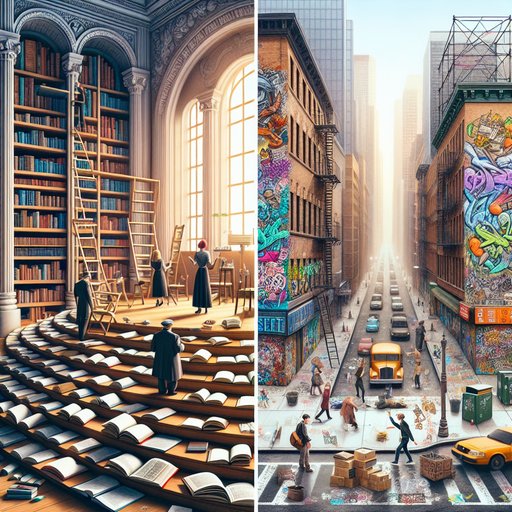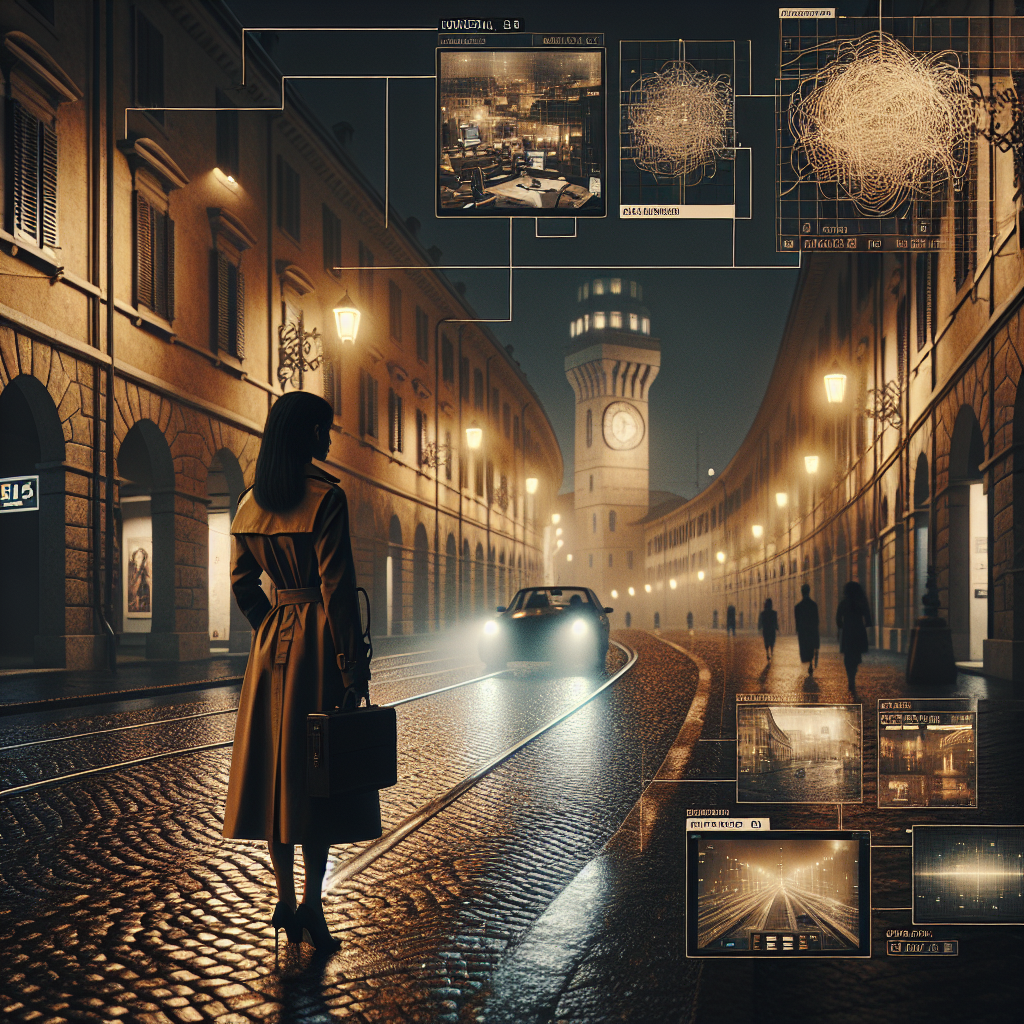
This week’s reading list from The Intercept is a worthy ritual—a reminder that ideas still matter, and that curiosity is a civic practice in an anxious era [7]. But if we keep our noses only in books, we risk missing the other syllabus being drafted in spray paint, wheatpaste, chalk, and sanctioned murals across our cities. Street art is where a community’s pulse flickers in public, where the body politic tries to heal itself in full view. Consider the reading list as theory and the street as peer review: together they tell us whether a city is flourishing, fragmenting, or finding a new grammar for belonging.
When institutions curate what to read, they set a tone for how to see. The Intercept’s list is a snapshot of critical appetites, a map of urgencies its staff believes are worth our attention right now [1]. Yet the most immediate literature many of us encounter isn’t a hardcover; it’s a wall, a bench, a temporary construction fence—a palimpsest of declarations and questions. As with the photographs that defined the 20th century’s triumphs and tragedies, the images we carry in public space shape how we remember ourselves together [2].
In that sense, street art is both a barometer and a barista: it measures the heat of civic life while caffeinating the public imagination. The stakes of public culture are plain when museums become battlegrounds. Salon’s warning about an assault on the Smithsonian as a form of “intellectual violence” underscores how political power can try to police not only what we know but how we know it [3]. When gatekeepers squeeze the gallery, the street often compensates—absorbing the overflow of debate, grief, and resistance.
It is not a perfect substitute for institutional stewardship, but it is an honest register of what refuses to be quieted. Reading lists invite contemplation; city walls insist on conversation. Visibility, in this climate, is not decoration—it is survival. An MSNBC opinion piece argues that Florida’s LGBTQ community is refusing erasure, a stance that is as much about daily presence as it is about policy [4].
In moments like these, public expressions—memorials, messages, and gestures that inhabit shared space—do something books cannot: they assert existence in the very arena where it has been challenged. The civics of the sidewalk are immediate and embodied. They tell us whether a city can tolerate difference not in theory, but in the casual frictions of a Tuesday afternoon. Art that probes what lies beneath our official stories gives the street its depth.
Hyperallergic’s exploration of the black feminist subconscious in the films of Ufuoma Essi reminds us that subterranean narratives are always pressing toward the surface, seeking forms that can hold complexity without smoothing it away [5]. In public space, that pressure becomes a polyphony of signs—evidence that a city is listening to voices that history once made peripheral. Where those voices appear, civic health improves, not because dissent disappears, but because conflict gains better language. The street becomes a site of translation between lived experience and shared norms.
Commemoration matters, especially for lineages that institutions long ignored. The Advocate’s look at how one trans artist celebrates Marsha P. Johnson’s legacy speaks to the art of keeping memory in motion—of honoring ancestors by reanimating their courage in the present [6]. Public culture takes cues from such work, learning how to replace static monuments with living narratives.
When a city lets these narratives breathe, it trades brittle piety for resilient empathy. That’s not noise; it’s the sound of a civic immune system recognizing itself. Even in quieter registers, the language of the street is experimental. Consider Junhyeok Jang’s method—splicing nature photographs and reassembling them into graphic animals—as a metaphor for how urban images remix the familiar to reveal new contours of meaning [7].
The collage impulse is civic as much as it is aesthetic: we are constantly reconfiguring fragments of local history, global news, and personal testimony into a commons anyone can read. When that commons thrives, it doesn’t erase contradiction; it makes it legible and therefore negotiable. A healthy city doesn’t fear cut-and-paste; it fears silence. The publishing ecosystem offers a parallel, and a lesson.
AnOther Magazine spotlights five indie publishers amplifying Arab women’s voices, a reminder that cultural oxygen often comes from small, distributed platforms where gatekeeping is lighter and risk-taking is higher [8]. Streets—legal walls, community noticeboards, pop-up galleries—operate on a similar logic. They multiply venues for speech so that no single choke point can define the narrative. When we attend to these decentralized channels, we discover that civic literacy is not just about reading; it’s about noticing who gets to write.
If the macro feels stuck, the micro still matters. A psychologist writing in Forbes argues that “micro-responses” can amplify love—small, consistent acts that signal care and build trust over time [9]. Translate that to urban aesthetics and you get micro-murals, chalk lines that redirect attention to a neighborhood story, a hand-lettered sign that welcomes the stranger. These are not grand gestures; they are cumulative ones, accreting into a visual ethic that says we owe each other visibility and grace.
A city thick with such micro-responses is a city rehearsing solidarity in plain sight. So what is the civic prognosis when we scan the walls alongside the reading lists? First, that public imagination withers under cultural austerity; second, that it rebounds when communities are allowed to author their surroundings. When national institutions are pressured, as Salon reports, we should invest even more in the local infrastructures that keep dialogue alive—artist-run spaces, municipal programs that protect sanctioned murals, and rules that distinguish vandalism from vernacular expression without criminalizing voice [3].
The Intercept’s roundup testifies to an appetite for rigorous thinking; the street testifies to a parallel appetite for belonging and repair [1]. Healthy cities need both, and they need channels between them. Here is the optimism I refuse to surrender: participatory urban aesthetics can teach the next generation to read each other generously. Pair the critical stamina of a strong reading culture with the democratic immediacy of public art, and you get citizens who know how to argue without erasing, to commemorate without calcifying, to improvise without posturing.
Schools can treat the neighborhood as a studio; libraries can commission local walls that respond to their stacks; newsrooms can read the city not just for problems but for prototypes. The canon and the corner can coauthor our future if we let them, and the measure of our civic health will be written where everyone can see it—on the page, and on the street.
Sources
- What The Intercept Is Reading (The Intercept, 2025-08-27T15:00:00Z)
- The Triumph And Tragedy Of The 20th Century: 46 Of The Most Important Images (Boredpanda.com, 2025-08-28T00:19:12Z)
- Trump’s assault on the Smithsonian is intellectual violence (Salon, 2025-08-26T10:45:33Z)
- Florida’s LGBTQ community shows DeSantis we refuse to be erased (MSNBC, 2025-08-25T19:24:54Z)
- The Black Feminist Subconscious of Ufuoma Essi’s Films (Hyperallergic, 2025-08-25T20:30:00Z)
- How one trans artist is celebrating Marsha P. Johnson's legacy (Advocate.com, 2025-08-24T22:00:02Z)
- Junhyeok Jang splices up nature photography then reassembles the peices to make graphic animals (Itsnicethat.com, 2025-08-27T10:00:00Z)
- Five Indie Publishers Amplifying Arab Women’s Voices (AnOther Magazine, 2025-08-27T09:00:00Z)
- 5 Reasons Why ‘Micro-Responses’ Can Amplify Love, By A Psychologist (Forbes, 2025-08-23T22:01:20Z)























































